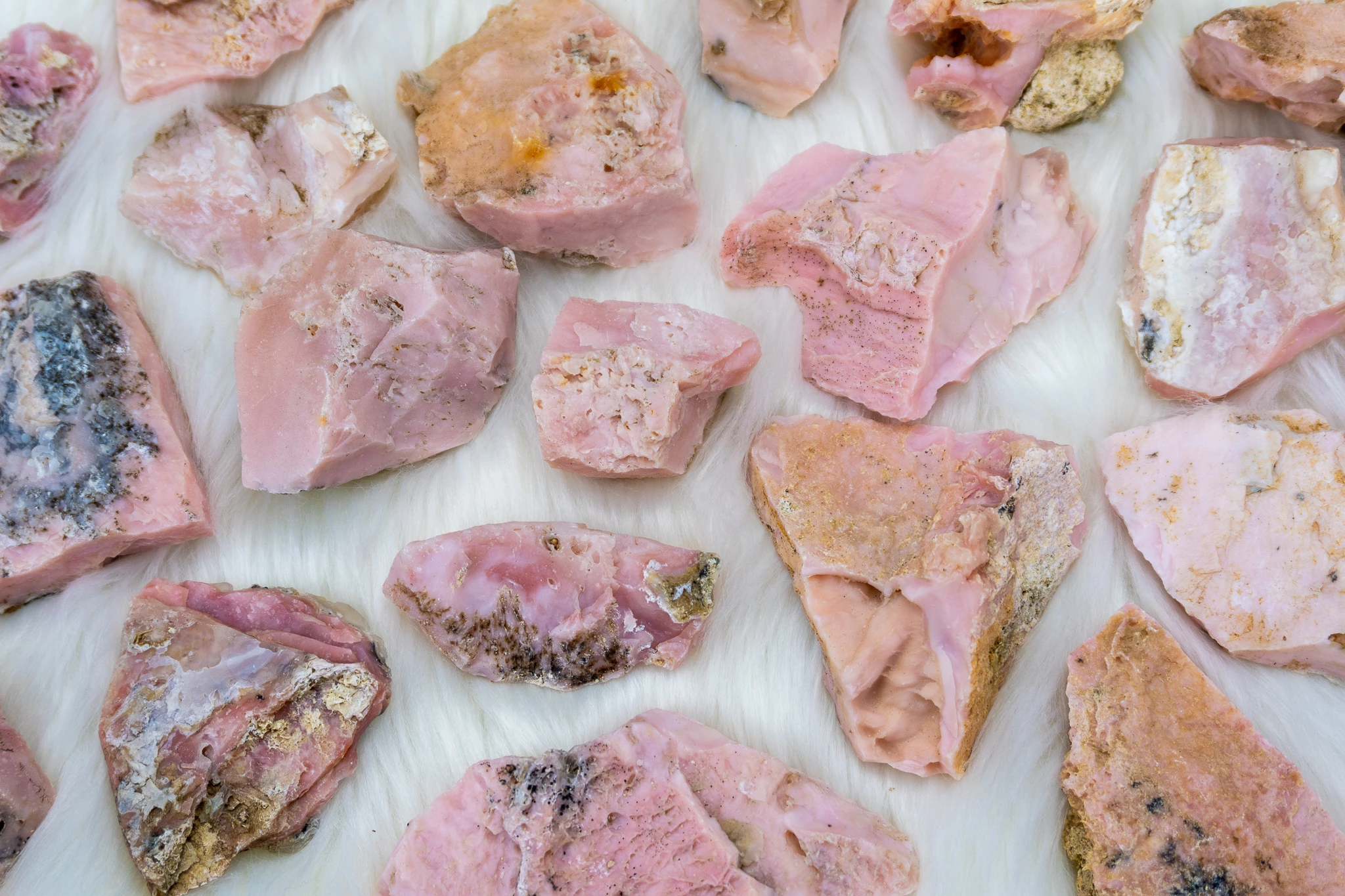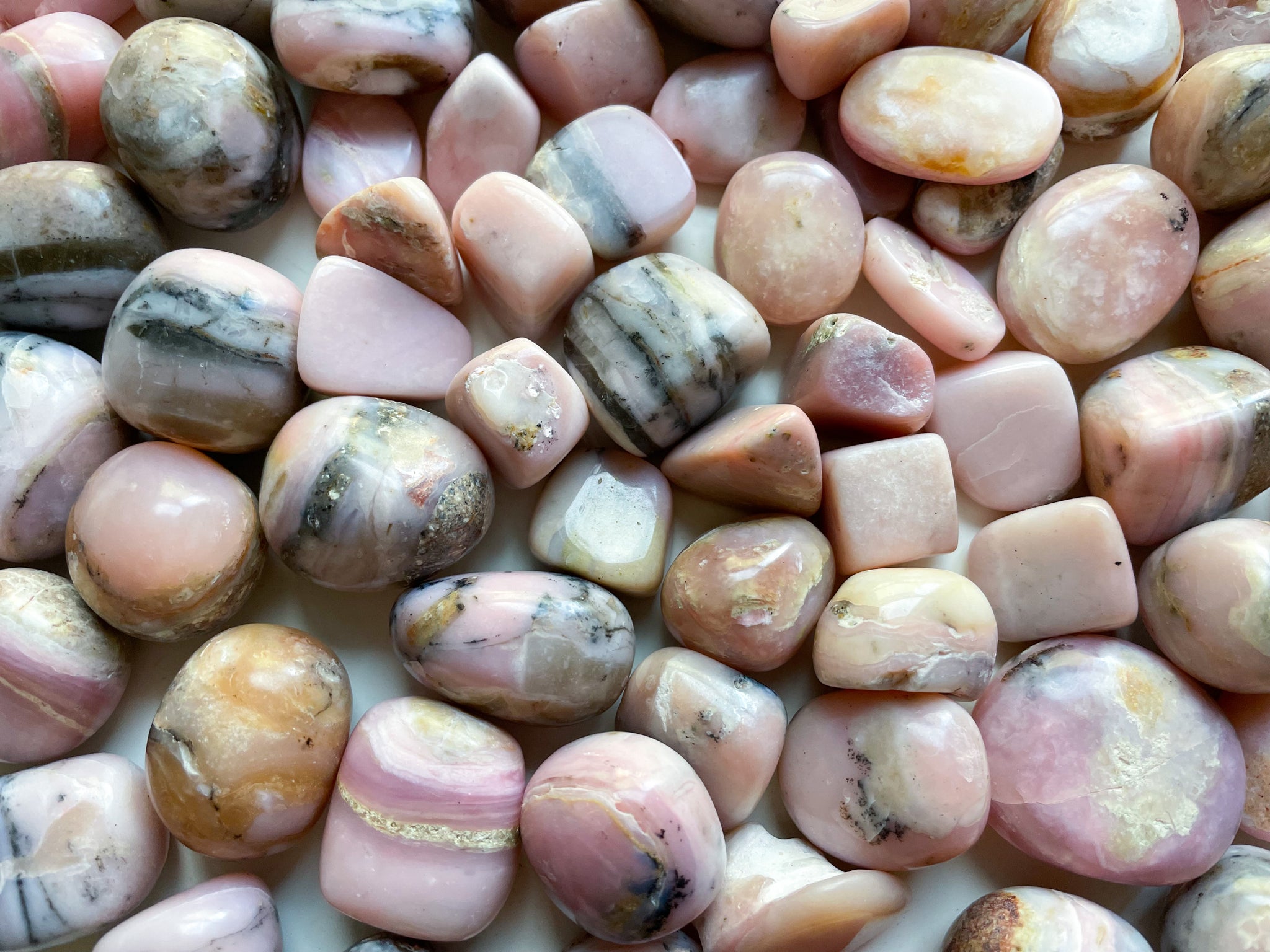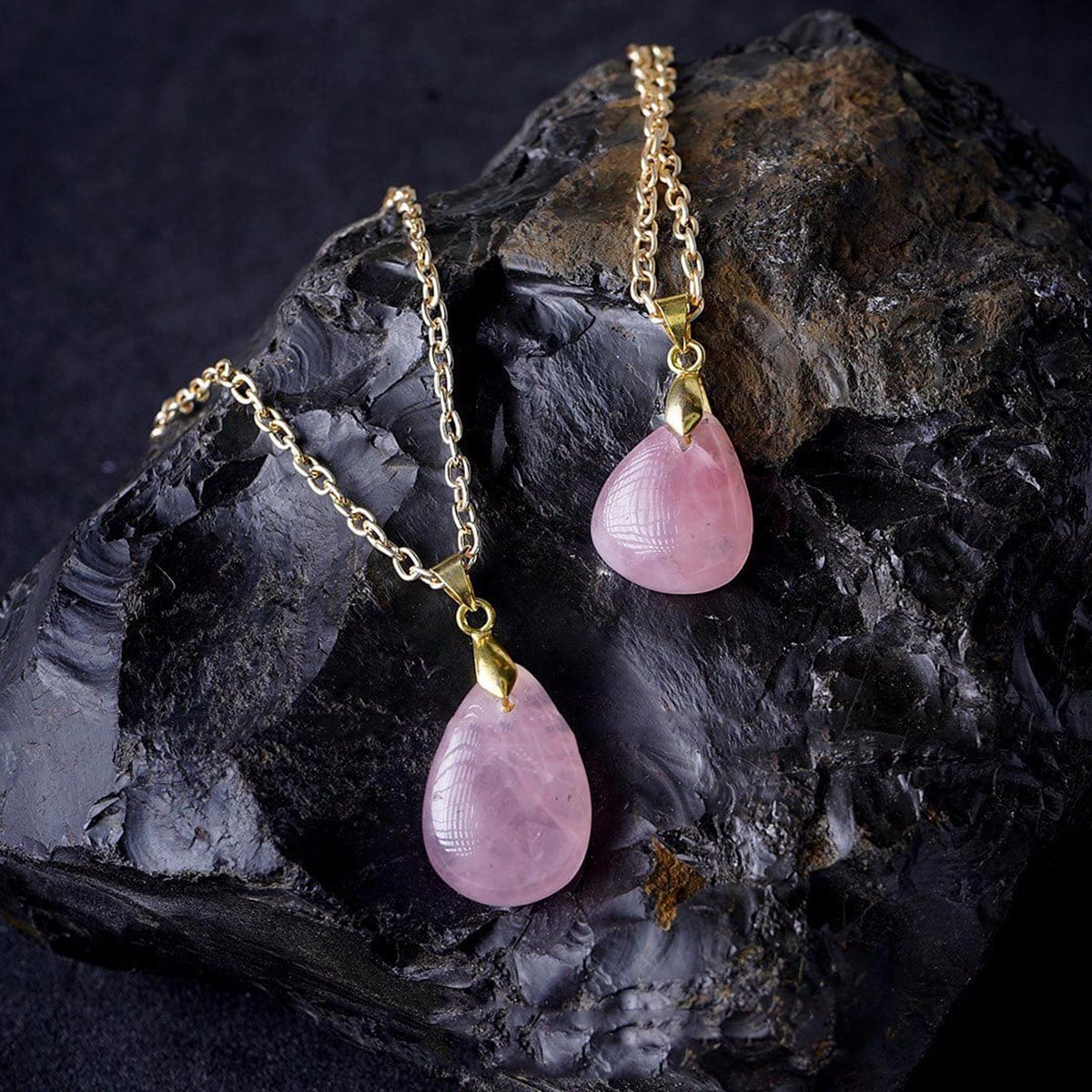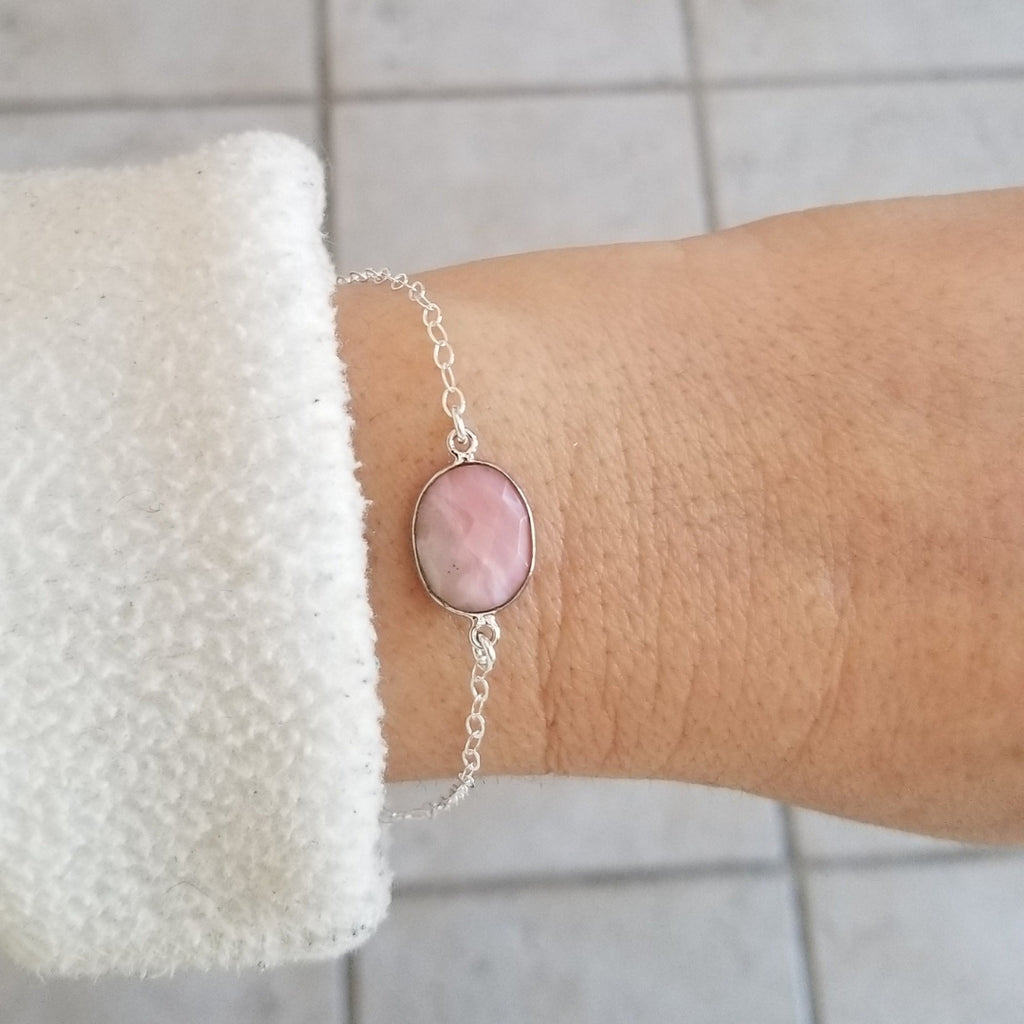When it comes to gemstones, both rose quartz and pink opal captivate with their soft, feminine hues and metaphysical properties. However, these two stones are distinct in their formation, appearance, and uses, making each one unique in its own right. Understanding the differences between rose quartz and pink opal will help you choose the right gemstone for your needs, whether you’re seeking a piece of jewelry, a healing tool, or a decorative item.

Formation and Composition
Rose quartz and pink opal differ fundamentally in their formation and composition.
Rose quartz is a type of quartz, one of the most common minerals found on Earth. Its pink color comes from trace amounts of titanium, iron, or manganese within the mineral structure. Rose quartz forms in large, often cloudy masses, which means it is rarely transparent and more often translucent to opaque. This stone is typically found in locations such as Brazil, Madagascar, and the United States.
Pink opal, on the other hand, is a variety of common opal, which is a hydrated amorphous form of silica. Unlike rose quartz, pink opal does not have a crystalline structure. Instead, it forms through the sedimentation of silica in water, which then hardens over time. This process gives pink opal its milky, sometimes pearly, appearance. Pink opal is most commonly sourced from Peru, which is why it is often referred to as Peruvian opal.

Color and Appearance
While both gemstones are pink, their colors and visual characteristics vary.
Rose quartz typically exhibits a range of pink hues, from very pale pink to a deeper, more saturated pink. The stone’s color is often uniform, though it can have slight variations. Rose quartz is known for its milky, translucent quality, and it may also feature asterism (a star-like pattern) when cut and polished correctly.
Pink opal’s color, by contrast, is usually more delicate, ranging from soft baby pink to pale pink with hints of peach or cream. Unlike rose quartz, pink opal can appear more opaque, with a smooth, waxy luster. Some pink opals may have slight color banding or inclusions, adding to their visual appeal.

Metaphysical Properties
Both rose quartz and pink opal are cherished for their metaphysical properties, particularly in the realms of love, emotional healing, and inner peace.
Rose quartz is often referred to as the “Stone of Love.” It is believed to promote unconditional love, compassion, and forgiveness. This stone is said to help open the heart chakra, allowing one to give and receive love more freely. It is commonly used in meditation, crystal healing, and as a talisman to attract love and harmony in relationships.
Pink opal, on the other hand, is known as the “Stone of Spiritual Awakening.” It is associated with emotional healing and the release of trauma, fear, and anxiety. Pink opal is believed to help calm the mind and soothe the heart, making it an ideal stone for those going through emotional upheaval or seeking to reconnect with their inner self. Like rose quartz, pink opal is also linked to the heart chakra but is often considered more potent in addressing deep-seated emotional wounds.
Uses in Jewelry
When it comes to jewelry, rose quartz and pink opal are popular choices due to their lovely colors and complementary metaphysical properties. However, their differences in hardness and appearance make them suitable for different types of jewelry.
Rose quartz, with a Mohs hardness of 7, is relatively durable and can be used in a wide variety of jewelry, including rings, necklaces, bracelets, and earrings. Its soft pink color pairs well with various metals, particularly silver and rose gold. Rose quartz is often cut into cabochons, beads, or faceted stones, making it a versatile choice for both everyday wear and special occasions.

Pink opal, with a Mohs hardness of 5.5 to 6, is slightly softer than rose quartz, making it more susceptible to scratches and damage. As a result, it is often used in jewelry that is less likely to experience rough wear, such as pendants, earrings, and brooches. Pink opal is usually cut into cabochons or polished into freeform shapes, which highlight its natural beauty and soft luster. It pairs beautifully with silver and gold, offering a subtle, feminine touch to any piece of jewelry.

Care and Maintenance
Both rose quartz and pink opal require care to maintain their beauty and integrity, but their different compositions necessitate slightly different approaches.
Rose quartz is relatively easy to care for. It can be cleaned with warm, soapy water and a soft cloth. Avoid exposing rose quartz to prolonged sunlight, as its color can fade over time. Also, it’s best to store rose quartz separately from other harder gemstones to prevent scratches.
Pink opal, being softer, requires more careful handling. It is sensitive to heat and harsh chemicals, so it’s important to clean pink opal with only mild soap and water, and avoid exposing it to direct sunlight, which can cause it to dry out and crack. To keep pink opal hydrated and prevent it from losing its luster, it is sometimes recommended to store it in a moist environment, such as wrapping it in a damp cloth or keeping it in a sealed plastic bag with a few drops of water.
In choosing between rose quartz and pink opal, consider not only their physical attributes but also their metaphysical properties and your intended use.
If you seek a durable, versatile gemstone with strong associations with love and relationships, rose quartz may be the ideal choice. Its gentle pink hue and relatively high hardness make it suitable for various jewelry pieces and everyday wear.
However, if you are drawn to a gemstone that offers emotional healing and a connection to your inner self, pink opal could be more appropriate. Its softer appearance and soothing energy make it perfect for jewelry that is both beautiful and spiritually supportive, especially in times of emotional transition.